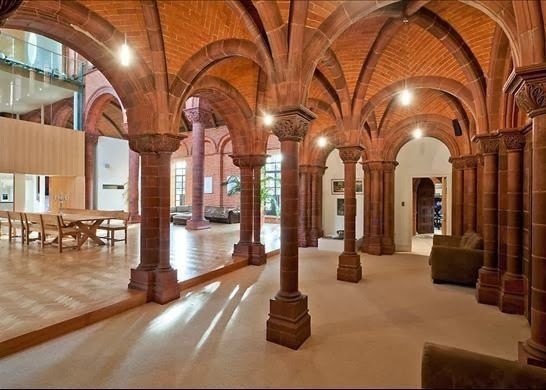Romanesque architecture combined features of ancient Rome and Byzantine styles. Its known for its semi-circular arches and vaults. There were a lot of churches built in this period and the most important are the abbey churches. Church walls were painted in blues, greens, purples, and golds. An arcade is a row of arches supported by piers or columns that are found in large churches. They are used as a structural element but also sometimes used as decoration.
The vault at the Abbey Church of Saint-Foy
Example of arcading.
The Corinthian style is the inspiration for many Romanesque capitals. The Pisa Cathedral, for example, was a lot closer to the classical styles.
Examples of the Corinthian styles that were adapted in the architecture during the Romanesque period
Current applications of modern Romanesque architecture:
Response to Natalies and blogs:
When looking at Natalie's blog I really loved the current application she showed with the vaulted ceilings and the columns with the blue walls. I think its a really cool example of a modern application because you can see on the columns they have the corinthian style capitals which i thought was very interesting. I also really enjoyed Lindsay's current applications as well. I didnt realize how common the semicircular archs were with windows in todays designs and I thought that was very cool that she showed that.





































